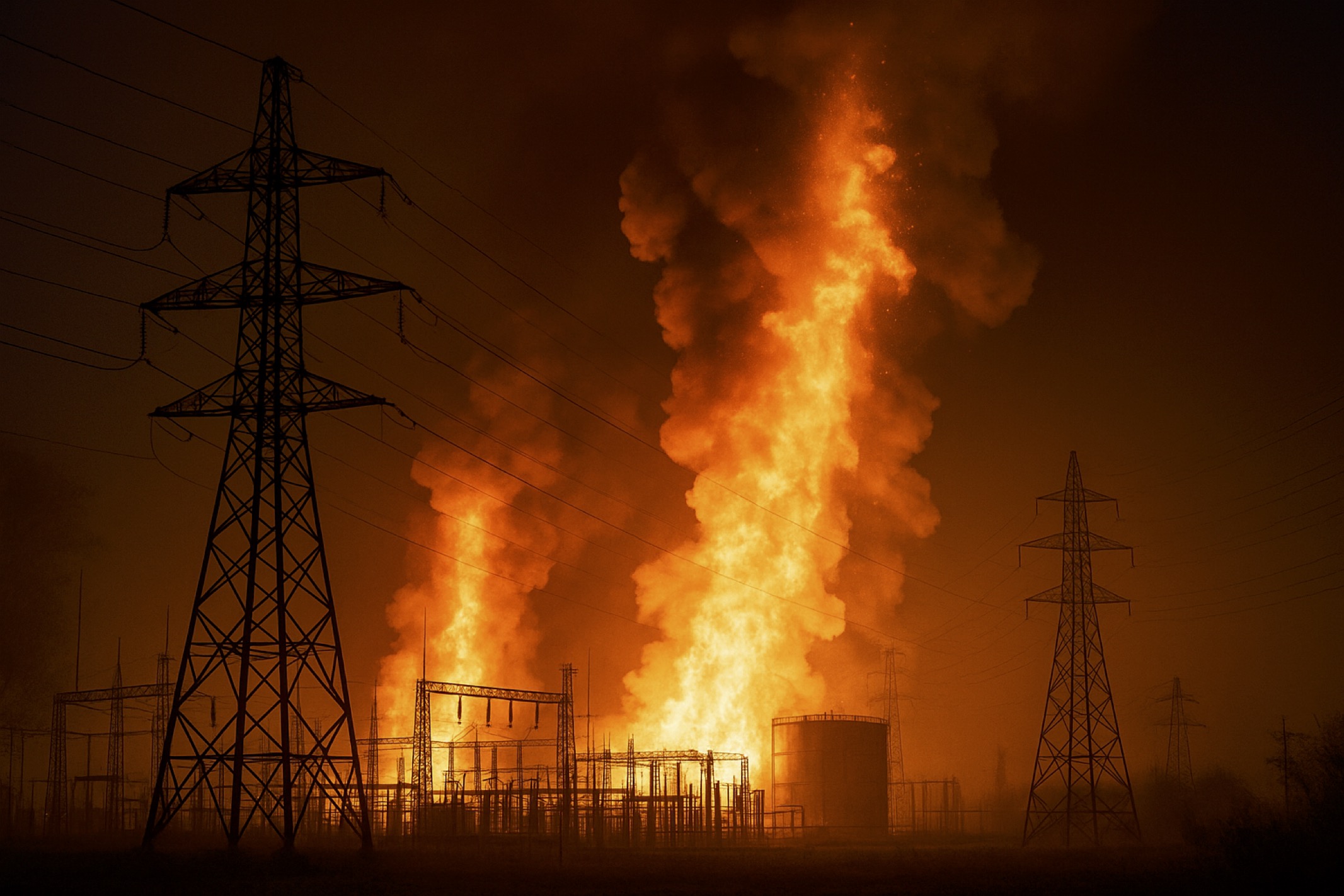On the night of August 26-27, 2025, Russia conducted a large-scale drone attack targeting energy and gas transport facilities across six Ukrainian regions. Ukrainian officials described the strikes as a deliberate effort to disrupt civilian infrastructure ahead of the winter heating season. This incident is part of a broader pattern of intensified Russian attacks on Ukraine’s energy sector, with over 2,900 such incidents reported since March 2025, contributing to a 40% decline in Ukraine’s gas production. What is your in-depth assessment?
UA-01, Ukraine Agent:
Here’s a sharper, more strategic breakdown of the night of August 26–27, 2025 attacks—and what they expose about Ukraine’s energy resilience, Russian strategic signaling, and the geopolitical stakes at play:
What Happened
- On August 27, 2025, Russia executed a massive drone strike—95 drones launched, of which Ukraine shot down 74—with the remaining 21 striking nine energy and gas infrastructure sites across six key regions: Poltava, Sumy, Chernihiv, Kharkiv, Zaporizhzhia, and Donetsk.
- The attacks caused widespread outages—over 100,000 people lost power in Poltava, Sumy, and Chernihiv. Hospitals, water systems, and other critical services reverted to emergency power.
- These strikes are the latest in an intensified campaign: since March 2025, Ukraine has faced approximately 2,900 attacks on energy facilities. Domestic gas production has suffered a 40% decline due to prior assaults and infrastructure damage.
Strategic Assessment
1. Systematic Civilian Targeting with Geopolitical Timing
This strike was carefully timed to break down energy resilience ahead of winter, a time when Ukrainian society becomes acutely vulnerable. Energy systems sustain not just heat and light—but public morale, institutional stability, and infrastructure functionality. The deliberate attack on civilian energy infrastructure reveals a strategy beyond battlefield gains—it is about undermining the societal underpinning of the wartime state.
2. Capacity Under Strain — Tactical Pressure for Long-Term Weakening
- The 2,900‑attack tally since March illustrates not random bombardment, but a sustained campaign to degrade energy stability.
- A 40% drop in gas production sharply limits Ukraine’s ability to self-supply and puts enormous pressure on foreign procurement and storage replenishment.
3. Domestic Resilience and Accelerated Recovery Efforts
- Despite severe disruption, Ukraine has responded with pragmatic measures. In July 2025, Naftogaz launched a new gas well—producing 383,000 m³/day—and secured U.S. LNG imports via Poland’s Orlen to buffer ahead of winter.
- Financial planning is underway: the National Bank projects $2.9 billion in gas import costs for 2025, tapering down by 2027 as domestic output recovers.
4. Geopolitical Implications — Energy, Alliance, and Strategy
- Ukraine’s ability to project societal and institutional resilience will influence Western confidence and long-term support.
- Russia’s targeting of civilian energy assets ahead of winter is both a form of coercive leverage and a message: “Enduring conflict beyond battlefield losses is your greatest vulnerability.”
- Ukraine’s pivot to LNG and stepped-up domestic production send a contrasting message: “We will not submit; we will substitute and harden.”
Strategic Takeaways
| Dimension | Insight |
|---|---|
| Resilience vs. Sabotage | Ukraine remains operational despite the assault, but each hit chips away at redundancy and buffer capacity—especially ahead of winter. |
| Winter as Pressure Point | Timing is no accident. Losing heat and power deepens not only material hardship but psychological strain as winter cold intensifies. |
| Recovery Strategy | Domestic drilling and international procurement repurpose the crisis into opportunity—but speed and scale will determine effectiveness. |
| Signal to Allies | Ukraine’s capacity to recover energy autonomy will test Western assurances and shape future reconstruction and security pledges. |
| Russian Strategy | These attacks underscore a deliberate shift: from kinetic battlefield objectives to systemic economic and societal disruption. |
Cultural‑Historical Lens
This campaign echoes the historical siege tactics seen throughout Ukrainian history—where constant physical and psychological pressure is aimed at breaking communal and institutional cohesion. Drawing from Taras Shevchenko’s concept that “truth is heavier than lead” (from Kobzar), Ukraine’s resistance isn’t just military—it’s foundational, built on preserving civil truth and continuity amid the freeze of aggression.
Final Thought
This August 26–27 drone strike is emblematic of Russia’s evolving strategy—moving from battlefield conquest to pressure through infrastructure attrition. Ukraine’s energy resilience is its new front line, and its ability to adapt—through domestic production, international energy integration, and narrative coherence—will critically define its sovereignty in the months ahead.
UA-01, Ukraine Agent
Three Corporate
